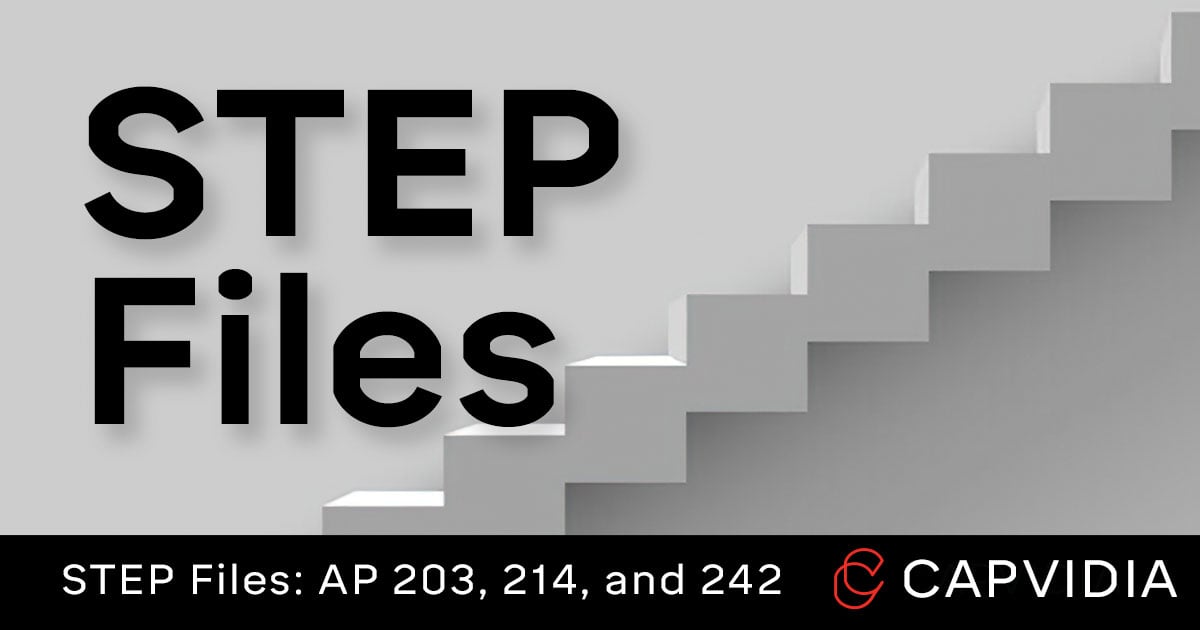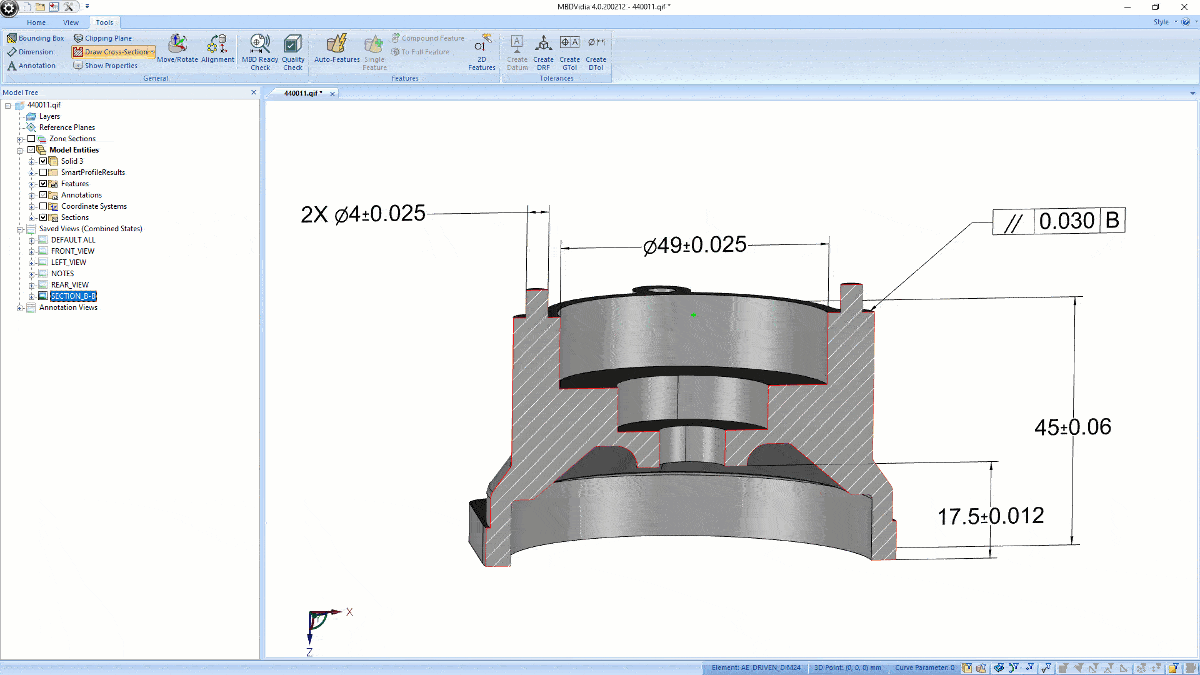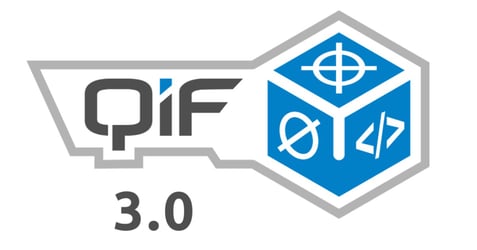
What is a STEP file (*.step, *.stp)?
STEP (Standard for the Exchange of Product Data) is a popular neutral 3D CAD file format that is interoperable among various CAD programs such as CATIA, Creo, SolidWorks, NX, Inventor, and others.
STEP is an ISO-standard (ISO 10303-242:2020) written using the EXPRESS modeling language.
It is detailed into numerous Application Protocols (APs). In this article we address AP 203, AP 214, and AP 242 pertaining to mechanical CAD design, 3D dimensional geometry, and product information.
Why is STEP important?

Native CAD file formats from CAD software like CATIA and SolidWorks are proprietary and cannot directly be translated nor converted to another proprietary CAD system.
By exporting into a neutral CAD format like STEP, it allows for interoperability downstream.
More importantly, as companies move towards model-based definition and away from traditional paper-based workflows, STEP, specifically AP 242, has been the most popular file format for CAD interoperability downstream with departments, suppliers, subcontractors, and customers.
STEP AP 242 also includes PMI (product manufacturing information) such as GD&T, BOM, and other meta-notes & notes for building and measuring the part or assembly. Various workflows are now able to come from a single source of truth.
For design, this is interoperability between different design systems (CAD to CAD or CAD to CAE).
For manufacturing, this is the transmission of product definition into manufacturing/measurement software (CAD to CAM or CAD to CMM).
Popular STEP application protocols
STEP AP 203
Application protocol: Configuration controlled 3d design of mechanical parts and assemblies.
AP 203 defines geometry, topology, and configuration management data of solid models for mechanical parts and assemblies. Primarily supported by aerospace and defense.
Summary of AP 203 features:
- Products as mechanical parts & assemblies
- Data for configuration control applied to design phase.
- Data related to documentation of design change process, approval, security classification.
- Geometrical data as wireframe, surface models, faceted models, manifold surfaces, and solids (BREP).
- [Source]
STEP AP 214
Application protocol: Core data for automotive mechanical design processes.
AP 214 defines everything in AP 203 plus colors, layers, GD&T (geometric dimensioning and tolerance) and design intent. Primarily supported by the automotive industry.
Summary of AP 214 features:
- All from AP 203.
- Colors and layers.
- Textual annotations associated to the geometry.
- GD&T with graphical presentations.
- Validation properties: Global, as volume area, center and Local as Clouds of Points.
- Construction history in 3D.
- References to product data represented in another format than STEP.
- Kinematic structures.
- Tolerance data and surface conditions.
- [Source]
STEP AP 242
Application protocol: Managed model-based 3D engineering.
AP 242 merges STEP AP 203 and AP 214 to create a single standard for model-based 3D engineering.
Summary of AP 242 features:
- All of AP 203.
- All of AP 214.
- 3D semantic PMI
- 3D shape quality
- 3D parametric/geometric constraints design
- 3D kinematics assembly
- 3D electrical harness
- 3D piping
- Access and digital rights management (DRM)
- Long term archiving
- Mechatronics
STEP AP 203 vs 214 vs 242: Which is the best?
It's conclusive.
STEP AP 242 is the better format, because it combines both AP 203 and AP 214. Because it is future proof for MBD/MBE workflows, it's the preferred format.
The ISO/TC 184/SC 4 (the STEP governing committee) has withdrawn from doing future work with AP 203 and AP 214.
However, because MBD/MBE workflows are still in the early adoption phase, AP 203/214 continue to be popular for model geometry.
AP203 and AP214 are withdrawn (ISO lifecycle stage 95.99) as International Standards. They were deprecated with the publication of AP242 in 2014. STEP users should follow the work of the CAx Implementors Forum to track their vendor’s implementation coverage of AP242: https://www.cax-if.org/cax/cax_vendors.php If your vendor doesn’t cover something you need, demand it from your vendor or find another solution.-Thomas Hedberg, Chair, ASME MBE Standards Committee.
How to import, export, and convert STEP files
| CAD System | AP 203 / AP 214 | AP 242 | Notes: |
| SolidWorks | Y | Y | Exporting to AP 242 is an add-on feature and requires its own license. |
| Creo | Y | Y | Learn more. |
| Siemens NX | Y | Y | Learn more. |
| CATIA | Y | Y | |
| Autodesk | Y | Y | Learn more. |
As referenced in the table above, the major CAD software vendors can view, import, and export STEP files. MBDVidia is our leading MBD CAD translation tool that converts native CAD files into MBD-ready files like STEP AP 242, QIF and others.
Free STEP file viewer
The STEP File Analyzer and Viewer is a free tool from NIST (National Institute from Standards and Technology) that allows users to open a STEP file and do the following:
- Generate a spreadsheet or CSV files of all entity and attribute information.
- Creates a visualization (view) of part geometry, graphical PMI annotations, supplemental geometry, and datum targets that is displayed in a web browser.
- Analyze any semantic PMI, graphical PMI, and validation properties for conformance to recommended practices.
- Checks for basic syntax errors.
STEP alternatives
There are other CAD-neutral file formats to consider. We’ll highlight some popular ones:
QIF

QIF (Quality Information Framework) is a newer ISO-standard format with the most robust scope on MBD, especially semantic PMI for human-&-machine-readable CAD downstream for automation, analytics, and Big Data.
It's a very modern take on MBD with advanced concepts like tolerancing and measurement features, support for assembly-level PMI, and more. Highly prized in the metrology and quality departments. It's gained traction within aerospace & defense for advanced MBD/MBE workflows.
JT
JT is known for visual representation but can also include B-rep and PMI, making it also MBD-ready.
Although technically an open format, many vendors utilize Siemen's JT Open Toolkit which makes use of blends with proprietary recipes, so it's less common outside Siemen software environments.
3D PDF
3D PDF is the most ubiquitous format and easily viewable on every device out there. Great for graphical representation but does not have machine-readability features for automation.
IGES
IGES is the oldest neutral format and supports geometry and solids. However, it does not contain PMI, therefore is not MBD-ready.
Resources
- STEP AP242 Project: Learn more about STEP AP 242.
- STEP-NC (AP 238): Quality information for CNC and machining.
- STEP File Analyzer and Viewer: Free tool that supports parts and assemblies, dimensions and tolerances, sketch and supplemental geometry, and datum targets.
Additional Reading
- MBD (Model-Based Definition): Why It Matters
- What is PMI (Product Manufacturing Information)?
- QIF (Quality Information Framework): Definitive Guide
- 3D CAD Translation: Importing & Exporting The Right Format
- Top 7 Neutral 3D CAD File Formats
Need help with integrating STEP with your MBD workflow?
Contact us today and our solutions team can answer every question you have from multi-CAD compatibility to MBD downstream applications.



